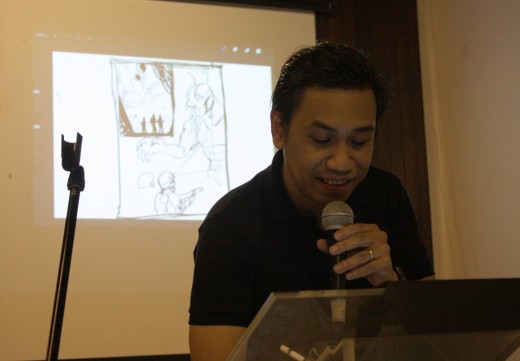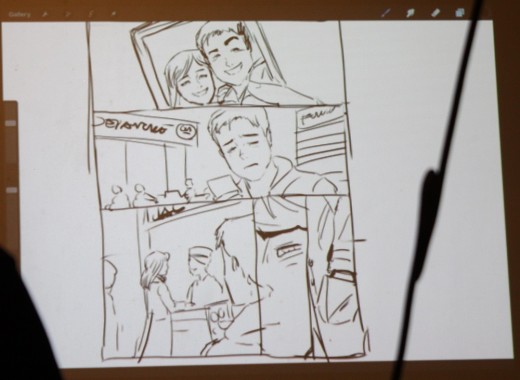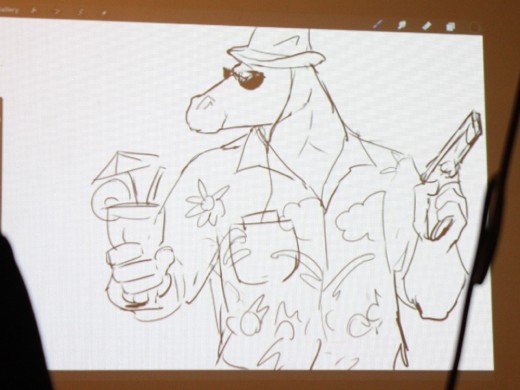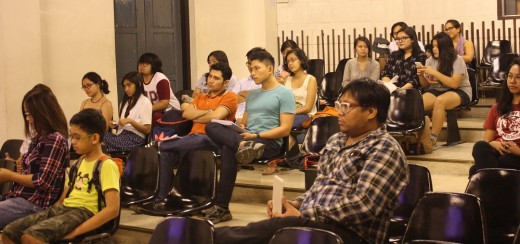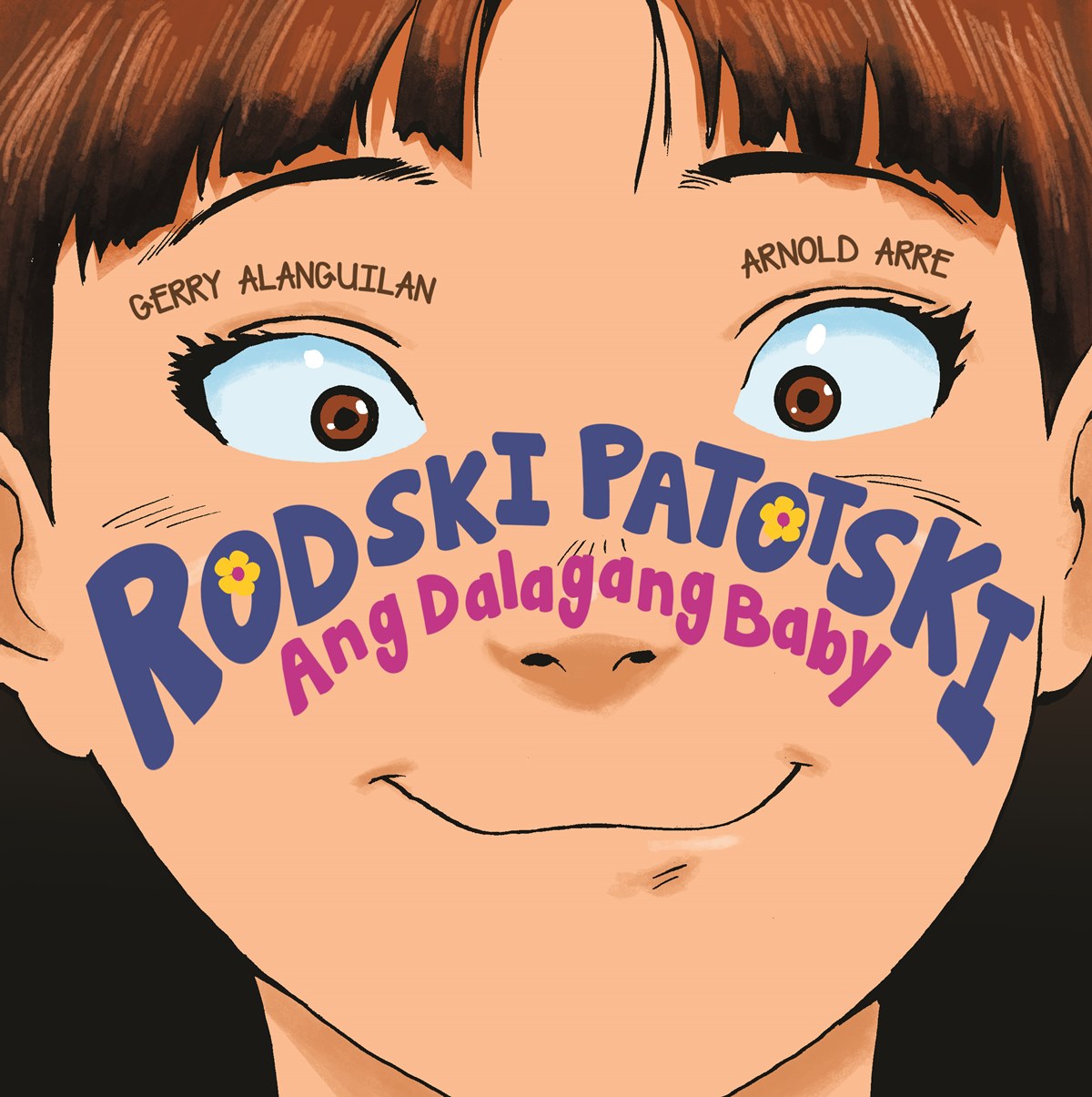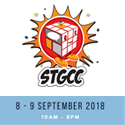Kwentong Pilipino: ARNOLD ARRE on Komiks and Filipino Stories
Aspiring komik writers and graphic artists were all ears last Thursday, May 5, as award-winning komiks writer Arnold Arre (Halina Filipina, After Eden, The mythology Class) talked about crafting komiks and Filipino stories at the Kwentong Pilipino workshop in UP Diliman. Organized by UP Graphic Arts in Literature (GRAIL), the workshop was held at the UP College of Mass Communication as part of the organization’s anniversary celebration.
[CHECK OUT… REVIEW: Fall in love again with Arnold Arre’s ‘After Eden’]
Arre, a veteran of the Philippine komiks scene, is hailed as one of the most brilliant minds in the local storytelling industry – with experience across various mediums such as writing, illustrating, and animation. A self-confessed fan of anime and manga (Japanese comics), Arre shared with attendees a few basics when it comes to writing comics and creating stories that celebrate Filipino culture.
CREATING DRAMA AND BUILDUP
“Comics are primarily a visual medium,” said Arre, explaining how to use the medium to its full potential while avoiding any missed opportunities. One key factor he put a great amount of emphasis on was drama, and how creating proper buildup in any story adds to its overall impact on the reader. According to Arre, some of the most common pointers given in workshops include “write what you know” and “it’s all about the actions and effects.”Drama should be emphasized more,” he said.
Arre also treated the audience to an on-the-spot demo – roughly sketching two versions of the same comic to illustrate the importance of creating drama through buildup. By slowly building up tension in each and every panel and detail, the reader becomes invested enough in the story and the emotions of its characters. As a result of this relationship between comic and reader, any important reveal or climax in the story will leave a great deal of impact, he explained.
“Basically, we [writers] are telling lies,” he said, “we want the audience to lie with us, to believe what they’re seeing is real.” But according to Arre, this does not mean that the comic has to be realistic. “Realism is boring,” he continued. “I use believability. Star Wars is not realistic, but it is believable.”
INVESTING IN SUBSTANTIAL CHARACTERS
Another technique good comic writers use to capture the attention of their readers is the introduction of relatable characters – those who possess characteristics that the audience can identify with. The key to this, as Arre discussed, was to humanize them. No matter what race or species they are, real or fictional, the writer must give each character a backstory. According to Arre, backstories serve many purposes, including explaining the current setting and giving a glimpse of the character’s personality.
To be relatable, each character must also have flaws, desires, and motives that could in turn move the plot forward and create conflict (internal or external) later on in the story. Arre also noted the importance of utilizing panels when it comes to conveying a character’s feelings. By using close-ups and far-off silhouettes, the audience can gain a greater feel of the intimacy or detachment between themselves and the characters.
WHAT IS A FILIPINO STORY?
Once he was done with the basics, Arre delved deeper into the subject of Pinoy komiks and genuine Filipino stories. Being the acclaimed genius behind award-winning titles like The Mythology Class, Trip to Tagaytay, and Ang Mundo ni Andong Agimat, Arre was able to give the inspired attendees significant advice on how to make a story “Filipino.”
“Write about us,” he said, “about the people and stories that you can relate to.” According to him, Filipino readers should be able to look at a character in a story and think: “I know someone like this” or “I am like this person.” He also underlined the importance of placing the characters in situations and places familiar to the reader.
[CHECK OUT… GRAPHIC NOVEL REVIEW: Halina Filipina]
“Set your stories here,” he noted, since there are no authors that know the Philippines and the Filipino people as much as Filipino authors do. Arre also noted that setting stories abroad can be difficult for several reasons, since there is a big chance that the portrayal of other cultures and places can be inaccurate unless the author has spent a significant amount of time in that area. Foreign editors may see stories set in their countries as ordinary, he said, but showing them stories about the Philippines will capture their interest since it’s new and unfamiliar.
“Even if your style is like manga, set it here,” he continued. “What made anime and manga so popular was the fact that the Japanese celebrated and took pride in their culture.” According to him, that was the key to creating and strengthening Filipino komiks. “We need to be proud of what we do.”

